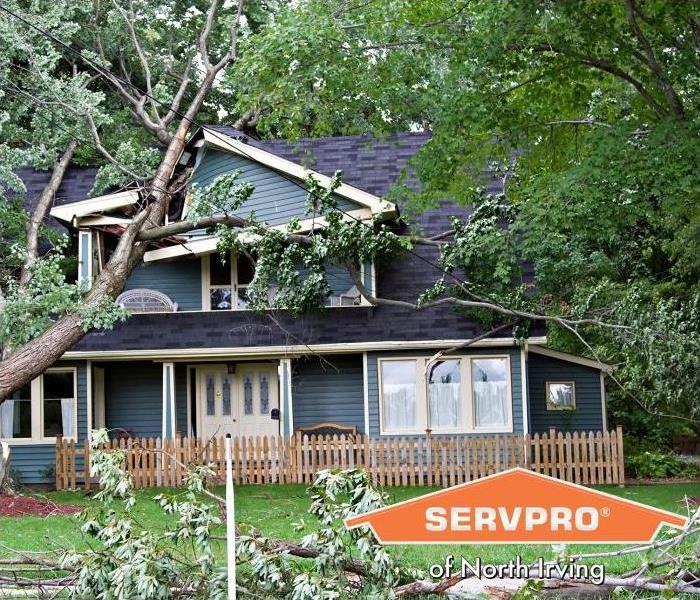How to Handle Storm Damage Until Professional Help Arrives
5/20/2021 (Permalink)
In Dallas, it’s not a question of if a storm will come through, it’s a question of when and how strong it will be. The overwhelming experience of storm damage makes you unsure of what to do next.
The safety and well-being of humans should always come first. This means staying away from dangerous elements like downed powerlines, applying first aid, and getting medical attention for severe injuries. Once everyone is safe and sound, then you can begin to recover property damage.
SERVPRO is ready for any disaster and we want you to be too. Here are some tips on how to proceed after storm damage.
Flood Damage
When floodwater gets into your property, the biggest concerns are electrocution and contamination.
The best thing to do when floodwaters rise is to kill the power to the house or building at the breaker box (if you can do so safely). Use personal protective equipment like rubber boots, bibs, and gloves while making contact with potentially contaminated water. Once you have the power off and protective gear on, you can begin to remove water, and salvage belongings by moving them to a dry area.
Once the flooding has dissipated and it’s safe to turn the power back on, you can run fans to begin the drying process. Mold spores begin to take root and grow within 48 hours, so drying helps to mitigate mold growth.
Tornado Damage
If you have moved to a shelter during a tornado, refrain from returning to the property until it is safe to do so. If you are still at the site of the tornado damage and are certain that no more tornado watches or warnings are in effect, then you may move about cautiously. Remember, the safety of people comes first.
- Dial 911 to report any downed powerlines or serious injuries.
- Check on your neighbors and render first aid.
Once everyone is okay, you can look over the damage. The National Weather Service recommends that you “wear long pants, a long-sleeved shirt, and sturdy shoes.” Remember to keep a heads up for falling debris from the damage above. Wear safety goggles and a hard hat.
Winter Storm Damage
The last thing you want during a power outage is a loss of electricity or water, but as we saw in February of 2020, these are not guaranteed when staying home and off the roads.
If the power is out, you may use fireplaces, candles, and kerosene heaters to stay warm. Refrain from building a fire inside the home or bringing an outdoor grill indoors. Block windows with blankets to reduce drafts of cold air and wear plenty of layers.
Keeps the taps dripping to avoid frozen pipes. If your pipes freeze, turn off the main water to your house so that if the pipes do crack, you won’t have gallons of water gushing out. Keeping a few taps open prevents pipe damage by relieving pressure and thawing ice blockages once the weather warms up.
When stepping outside, beware of falling icicles from above, and walk slowly on the ice. Refrain from driving until the roads have had warmth and time to deice.
Fallen and drooping trees may cause downed powerlines. If you see these, dial 911 immediately.
Call Your Insurance Company & Call SERVPRO
Be sure to take plenty of photos of the damage and document as much as you can. Then call your insurance company to initiate a claim. Next, call SERVPRO at (972) 986-7677! We are the restoration company recommended by top insurance carriers.






 24/7 Emergency Service
24/7 Emergency Service
